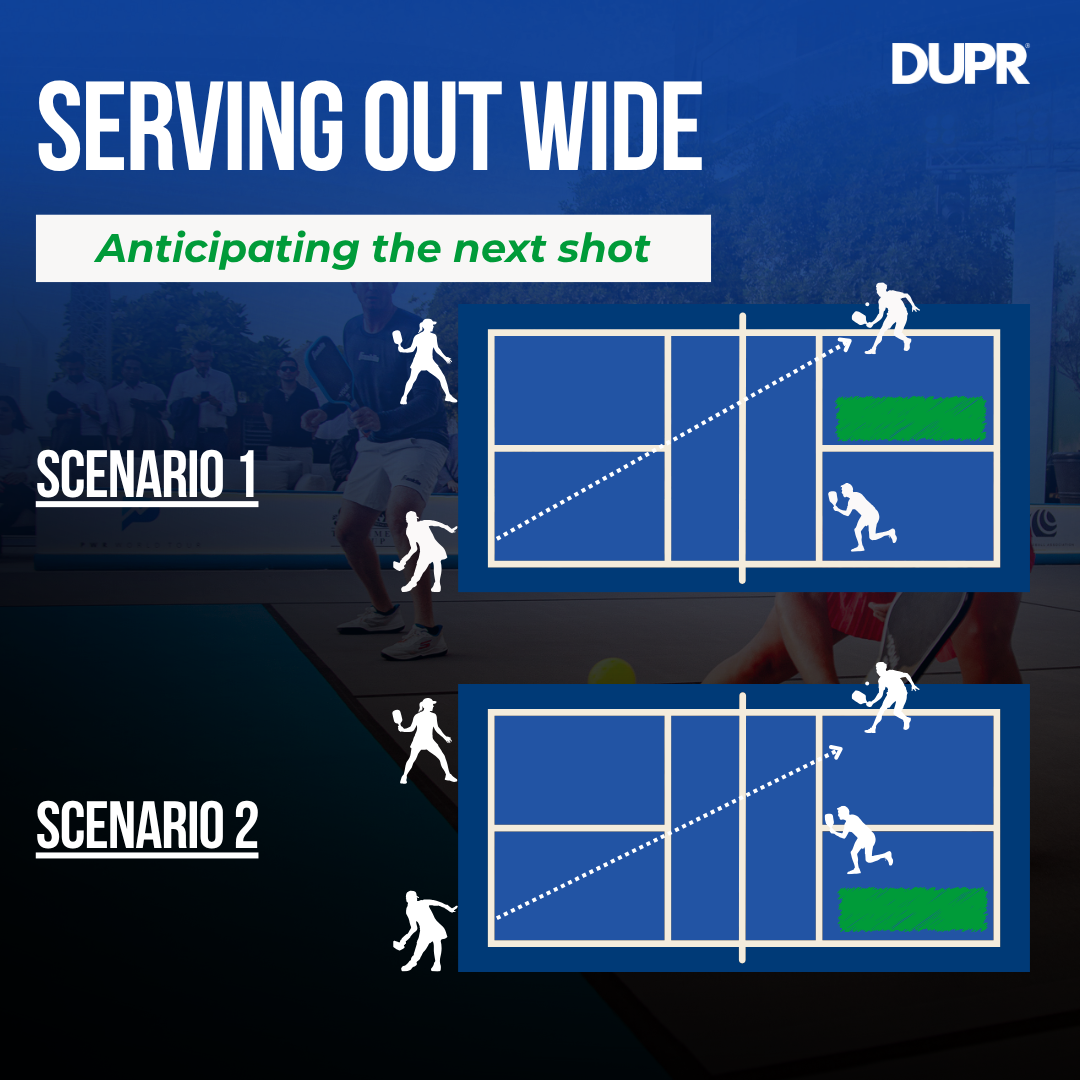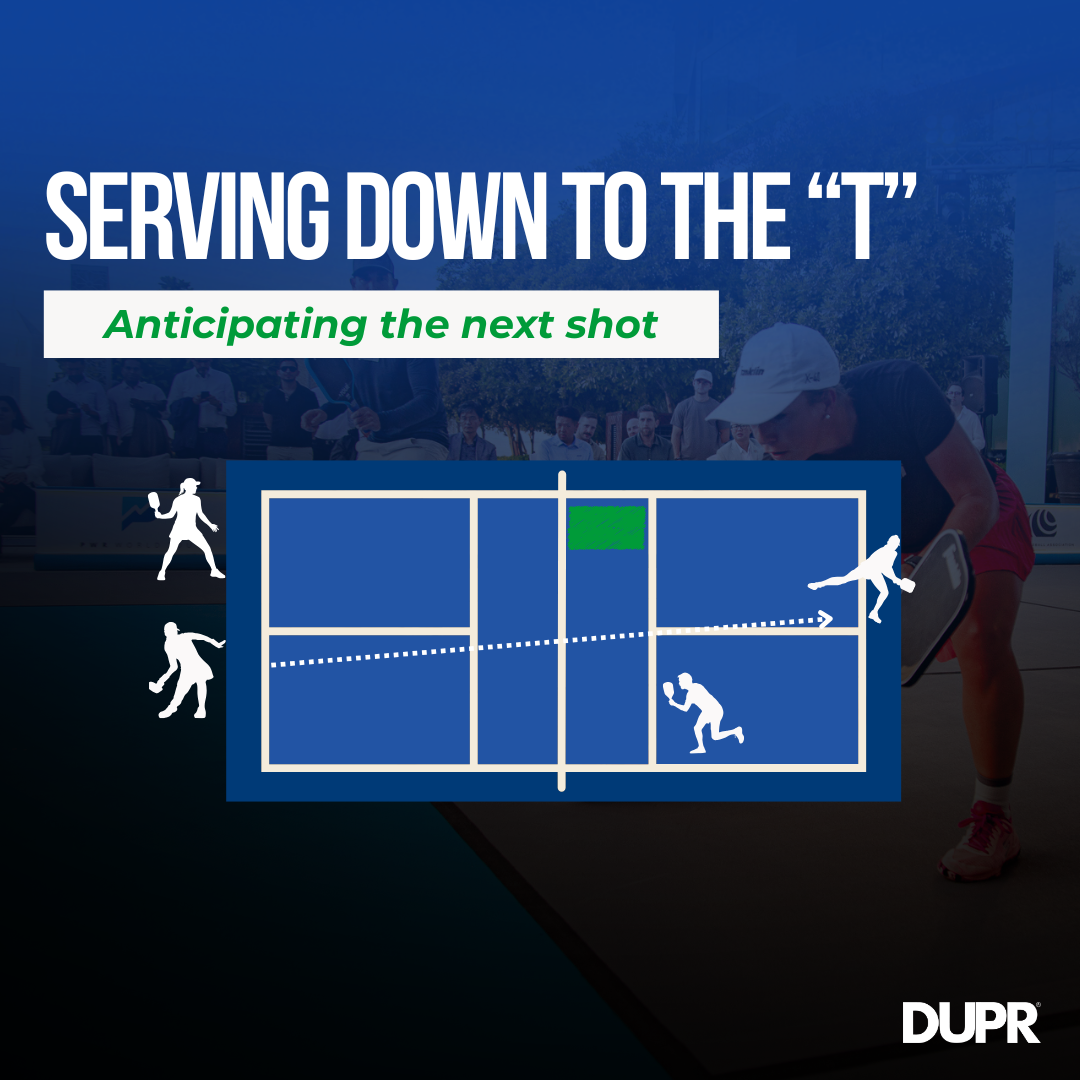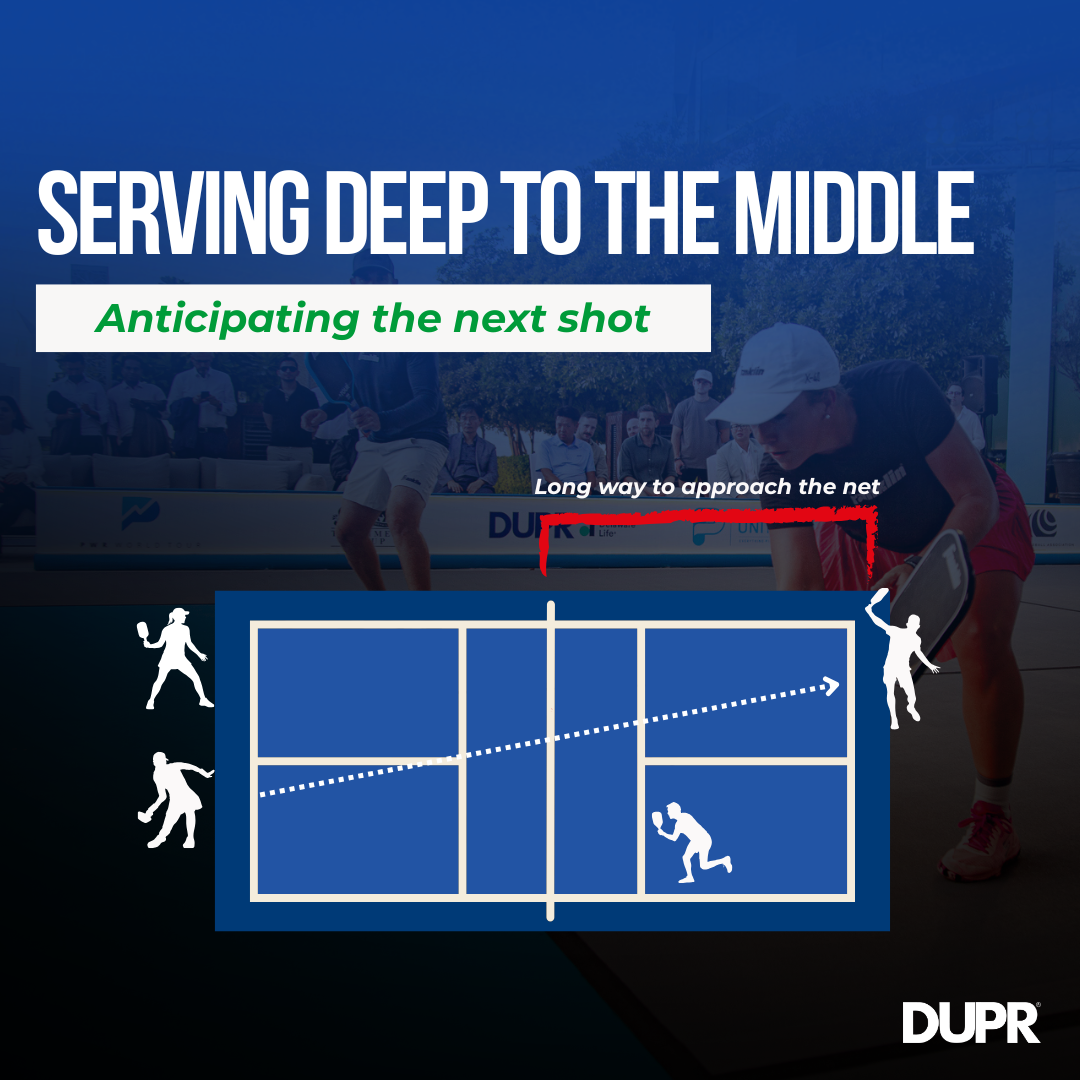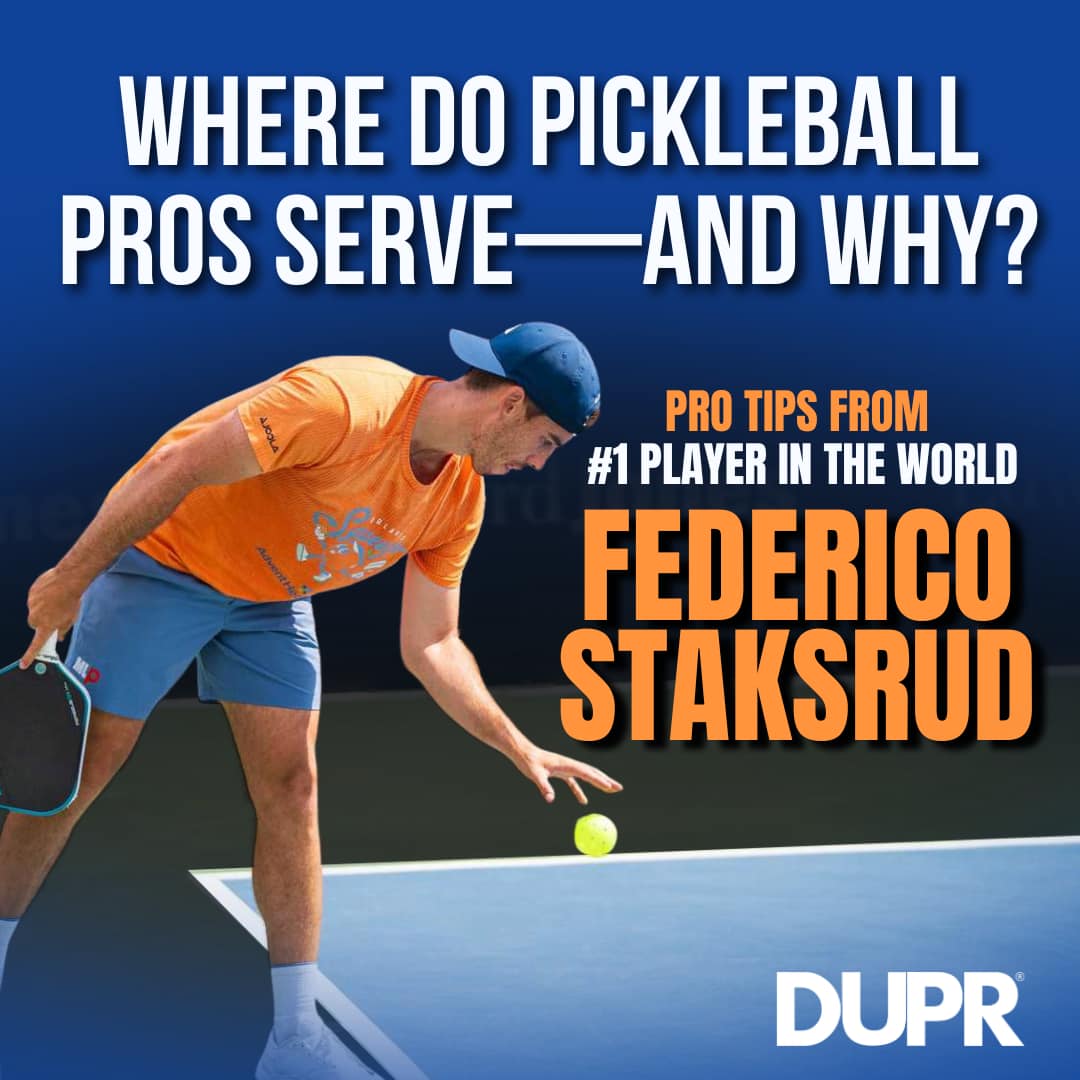A Strategic Guide to Take Control From the First Shot
The serve kicks off every point; but it’s not just about getting the ball in. Where you place your serve can shape how the rest of the rally unfolds.
Because of the double bounce rule, returners have a built-in edge. They get to take the kitchen right away, while the serving team has to wait for the return to bounce at least once before approaching it. But that doesn’t mean you’re stuck playing defense.
A well-placed serve (within the serving rules) can buy you time, throw off your opponent’s rhythm, and set you up to take control of the point, right from the start.
So let’s break down where the best pro players in the world serve, why they do it, and how you can use those same strategies to level up your game.
Serving Isn’t Just “Getting the Ball In”
Too many players treat the serve as a neutral start. Pros don’t. They treat it as a setup; one that can create gaps, short returns, or lock opponents into awkward positions. Where you place your serve should depend on your strengths, your opponent’s weaknesses, and what you want to do next.
Where to Serve and What It Sets Up
1. Wide Serve (Angle to the Sideline)
- Goal: Pull the returner off the court.
- Why it works: Creates space in the middle of the court. If the net player shifts over to cover the gap, it leaves the down-the-line shot wide open.
- Bonus tip: The wider you stand on the baseline, the sharper angle you’ll get.

When you serve out wide, you force the returner off the court; but what happens next depends on their partner at the net. If the net player shifts to cover the middle (which is the smart move), it leaves the down-the-line shot open for you to attack. But if they stay hugging the sideline to protect against that shot, they give up a huge space in the middle.
Either way, you create a gap. You just need to recognize where it is and be ready to exploit it on your third shot.
Bobbi Oshiro (DUPR 5.9) shares:
“The wide out serve is a tough target to hit so not many returners anticipate it.” Bobbi said. “It puts the returner out of position for the next shot when trying to make it up to the kitchen and it gives me an easier third shot to their feet.”
Check out Bobbi’s article on how to become a pro pickleball player, where she includes her schedule, training plan and more valuable tips.
2. Down the T
- Goal: Pin the returner deep in the middle or stretch their reach across their body.
- Why it works: Keeps the returner more central, which means their crosscourt angles are limited. Sets you up to control the next ball with a third shot drop.
- Pro combo: If you're comfortable dropping wide or want your partner to attack with an Erne, this is the perfect setup.

Bobbi Oshiro adds:
“On the left side of the court, I love hitting big down the T. It gets them moving and opens up their backhand side for my third shot drop.”
3. Body or Middle Serve
- Goal: Jam your opponent and reduce their options.
- Why it works: When you hit deep and at the body, your opponent has a harder time stepping into the shot. They’re forced to take a step back and return more defensively, buying you time to move forward.
- Result: Slower, shorter returns that you can jump on with an aggressive third shot.

Pro Serving Tips
Noe Khliff (DUPR 6.588)
“Wide serves are my go-to. They open up the court so I can use angles more effectively on the third shot.”
Bobbi Oshiro (DUPR 5.909)
“From the right side, I love serving sharp out wide. It’s unexpected and gets the returner moving out of position, which sets up an easier third shot. From the left, I like going big down the T. Both can draw short returns and give you the edge early.”
Madalina Grigoriu (DUPR 5.522)
“Serve wide when teams are stacking and switching. It disrupts their timing and forces them into bad returns.”
Where Does The #1 Pickleball Player in the World Prefer to Serve?
Federico Staksrud (DUPR 7.076) – World #1
“I hit a deep topspin serve to the backhand. It pushes players back and often results in a weak return.”
Serving deep, especially to the backhand, is one of the simplest ways to force errors and buy yourself time to control the next shot. If it’s good enough for the world’s best, it’s worth it for you to try it out in your next pickleball tournament.
Start serving with purpose, and you’ll start every rally one step ahead.










.jpg)







